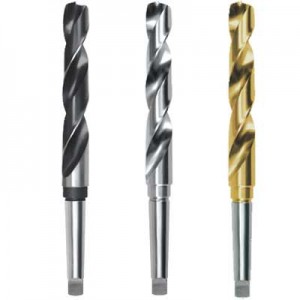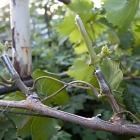 In construction and during repair, such tools as perforator, drill, screwdrivers are often used. They have a drilling function, and sometimes you have to deal with a problem, how to cool the drill on yourself, to extend the service life. There are methods for sharpening spiral drills that can be applied at home, with For this, it is not necessary to have a special machine.
In construction and during repair, such tools as perforator, drill, screwdrivers are often used. They have a drilling function, and sometimes you have to deal with a problem, how to cool the drill on yourself, to extend the service life. There are methods for sharpening spiral drills that can be applied at home, with For this, it is not necessary to have a special machine.
Drills are characterized by metal from which they are made, and sharpening angle. By its structure, the drill must be harder than the material for the processing of which it is used. As an example, you can consider the drill, the simplest in the form - for metal work. For its sharpening, an electric tool with a rotating disk for grinding is suitable. To ensure the safety of the process, the tool is firmly screwed to the workbench and put on special glasses to protect the eyes. Before sharpening the drill, you need to take care of the presence of a container with coolant, because when grinding it will be heated. So that the metal drill does not lose their qualities from overheating, it must be cooled. The drill sharpening angle is an angle that is formed by cutting edges when looking at them on the side. Since the spiral drill has a conical ending, it has two cutting surfaces. Its rear plane is deployed at a certain angle. When sharpening it is necessary to control the position of the drill. Its rear surface should lag behind the rotating washer at a distance of0.2 millimeters, and all over the radius.
If you need a sharpening drill on a metal or a tree with the use of electricity, then you should know that the process will take place in several stages. Initially, the drill is formed by the rear surface, as a result of which the ending should acquire a conical form. After that, you need to form a cutting edge, while observing caution. After sharpening the drill at its end, a jumper appears. For drills with a diameter of up to seven millimeters, it must be 0.5-0.7 millimeters. If the drill is larger diameter, then the jumper can be from one to one and a half millimeters. At the end, the final sharpening is performed, as a result of which the rear corner of the drill is created. It depends directly on what metal is made drill.
The main complexity of this method is a sharpening drill with aged angles. Experience comes with practice. Recommended to use a tilter on which you need to set one hundred eighteen degrees. If the drill was sharpened correctly, then when drilling, they will go to the chips from both of its spiral grooves.
Much less often than a drill on a tree or metal require additional processing of drill on concrete. However, there are features here. So, when sharpening drills on a grinding stone during strong overheating, it is not recommended to lower the drill to water, otherwise its plate can burst. It is better if it is gradually cooling in air. With proper sharpening, the drill has direct cutting edges, and their intersection should coincide with the axis on which the drill rotates. If you do not comply with these rules, the drill will be blown off faster and the risk of its breakage will appear.
When the drill is carried out, the process is better controlled using the washer. It should have a diameter less than the drill. When the drill is installed in the hole of the washer, its front edges should concern it, and the rear fall from it by a0.2 millimeter. Some rules should be followed. For example, when sharpening, you need to show maximum attention to not damage the cutting surface in the drill. To do this, it is necessary to leave intact 0.2-0.3 millimeters. From them, the metal is removed last.
After familiarizing with this material, you should not impede the question of how the drill is carried out, and what rules should be observed. Now you will not need to throw out the rejected drill, since you can cope with the problem with your own.













 Start a discussion ...
Start a discussion ...